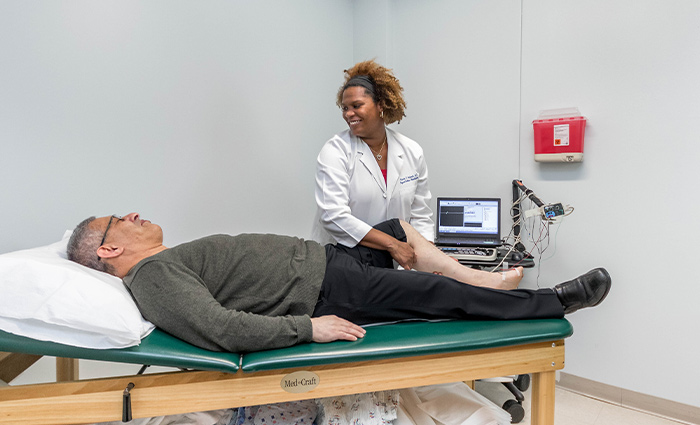Back pain is a common, pressing issue throughout the world. One study found that around 65 million Americans report a recent episode of back pain. Some 8% of all adults (16 million people) experience persistent or chronic back pain and as a result, are limited in certain everyday activities.
There are several treatments available to combat this rise in pain. However, not all of them work. One of the treatments that have proven results is radiofrequency ablation.
We’ll be analyzing how this procedure works, the benefits it brings, and what you can expect before and after. All of that will help you determine whether or not it’s right for your unique back pain.
What is radiofrequency ablation?
Radiofrequency ablation, also referred to as fulguration, is the medical procedure in which a part of the electrical conduction system of any dysfunctional tissue is ablated using the heat generated from medium-frequency alternating current.
It’s generally done in an outpatient setting using either local anesthesia or conscious sedation anesthesia.
In other words, it’s the process of using an eclectic current to heat up a small area of nerve tissue in order to stop it from sending pain signals.
Who benefits from this treatment?
Patients who suffer from chronic back, knee or neck pain should look into this procedure. It provides long-lasting relief for people who continue to suffer but don’t have surgery as an option.
Your doctor may suggest this procedure if you have back pain that occurs on one or both sides of your lower back. Or, if you have had a successful experience with a nerve block injection, then radiofrequency ablation may be the next step recommended to you.
Radiofrequency ablation isn’t only for treating back lower back pain. It can be used in a variety of other medical situations, such as chronic pain, arthritis and neck pain, as we mentioned.
What should I expect from a radiofrequency ablation treatment?
There are a few steps of preparation you take before the procedure.
- Don’t eat within six hours of your appointment. You can, however, have clear liquids up to two hours beforehand.
- Those who have diabetes need to adjust their insulin dosage on the day of the procedure. Your doctor should be about to help you with that adjustment. Just be sure to bring your medication along so you can take it after the process.
- Bring all your medications with you, so you take them after your procedure is done.
- Bring a friend or loved one to drive you back from the hospital.
Your doctor will surely explain the whole procedure and the risks therewithin, but we’ll give you the rundown. Here’s what you can expect during radiofrequency ablation.
An intravenous line (IV) will be inserted into the vein on your arm before the procedure. A local anesthetic, plus a mild sedative, may be used to reduce any general discomfort during the process.
Once you have been given the local anesthetic, the doctor will begin by inserting a small needle into the general area where you’ve experienced your pain. You won’t encounter any pain or discomfort during this. Then using an X-ray, they’ll guide the needle to the specific target area. From there, a microelectrode is inserted through the needle to start the stimulation process.
The doctor performing the treatment will ask if you can feel a tingling sensation to help narrow down if they’re in the optimal spot.
Finally, when the needle and electrode placement are perfect, a small radiofrequency current is sent through the electrode into the surrounding tissue. That causes the tissue to heat up. You shouldn’t feel any discomfort throughout the heating portion.
What happens after this procedure?
After the procedure is completed, you’ll stay in a recovery room so a nurse can keep tabs on your blood pressure and go over your discharge instructions. When you’ve been cleared, somebody will drive you home. You’re not allowed to operate any heavy machinery for at least 24 hours.
You can resume your normal diet. However, you should refrain from a few things.
- Don’t do any strenuous activities for the first 24 hours.
- Don’t take a bath for one to two days afterward. You may only take showers.
- You can remove the bandages before going to bed that evening.
The pain relief given by radiofrequency ablation can last anywhere from six months to 12 or, in rare cases, a few years. More than 70 percent of people experience pain relief after the procedure.
Radiofrequency ablation in Cary and Raleigh
Cary Orthopaedics Spine Center offers an array of effective non-invasive treatments for neck and back pain, including radiofrequency ablation. Our physiatrists tailor each treatment to a patient’s specific needs. For more information about back pain relief, contact our spine center today.






